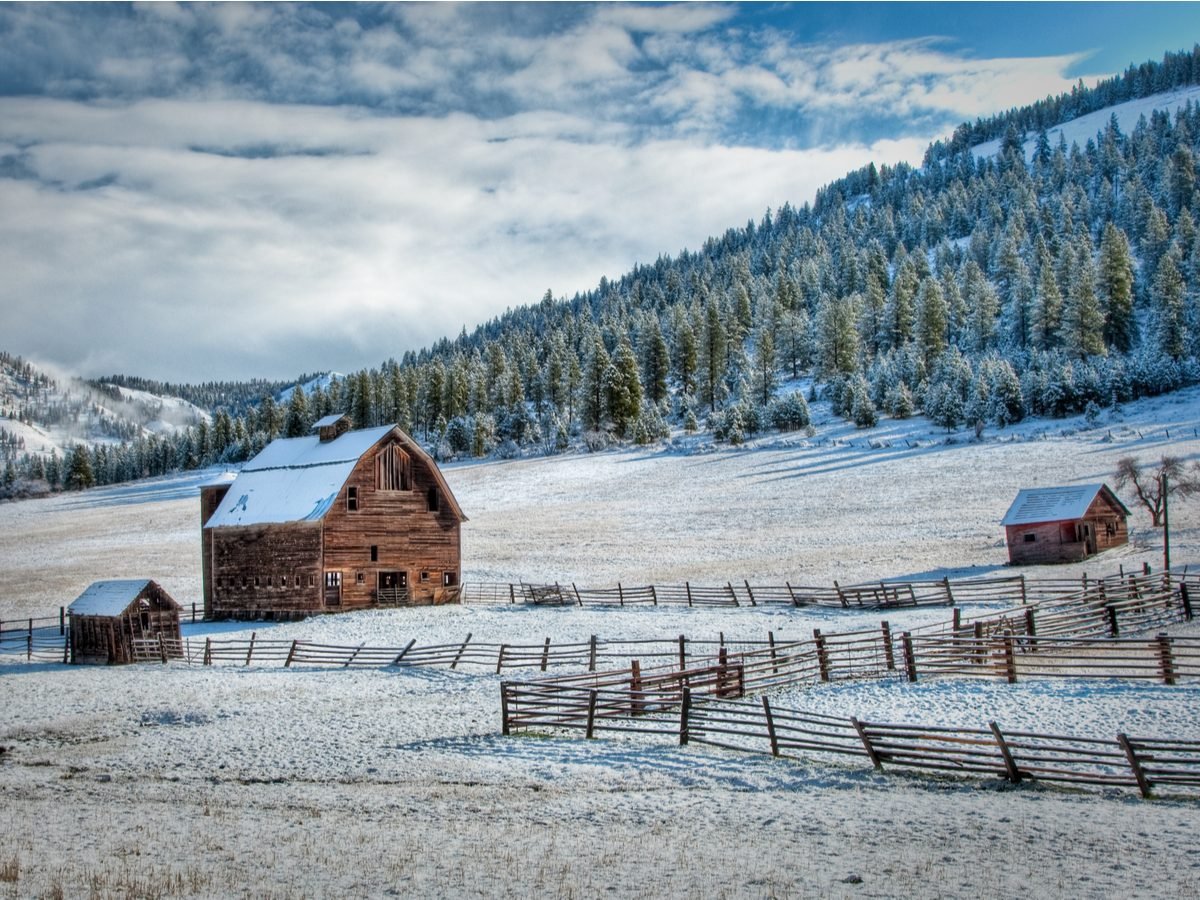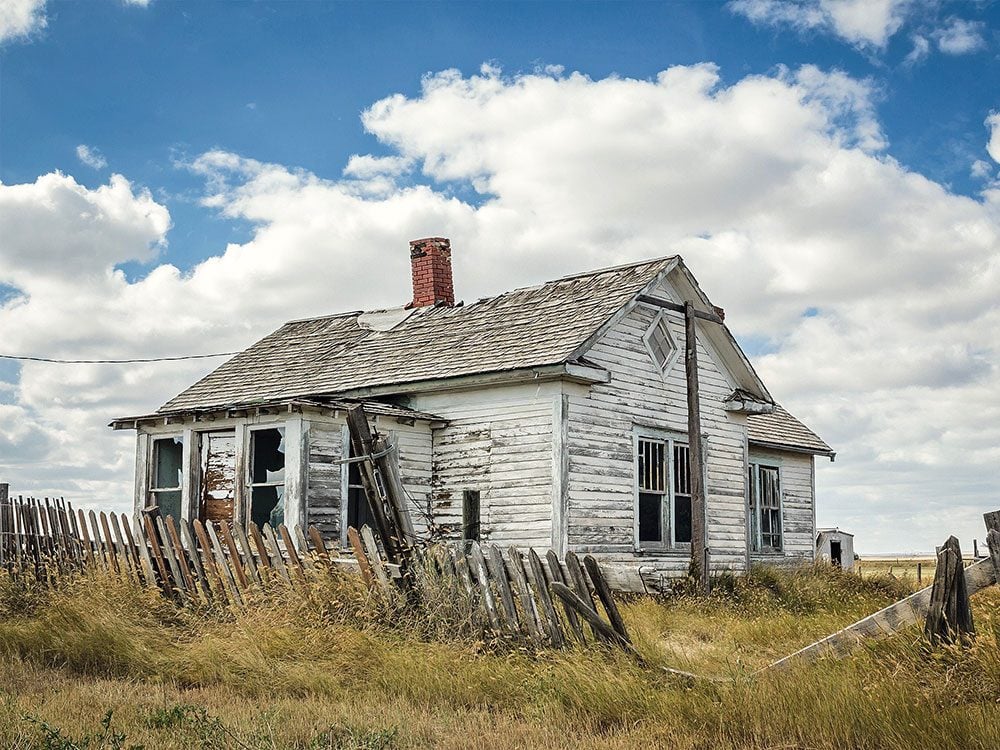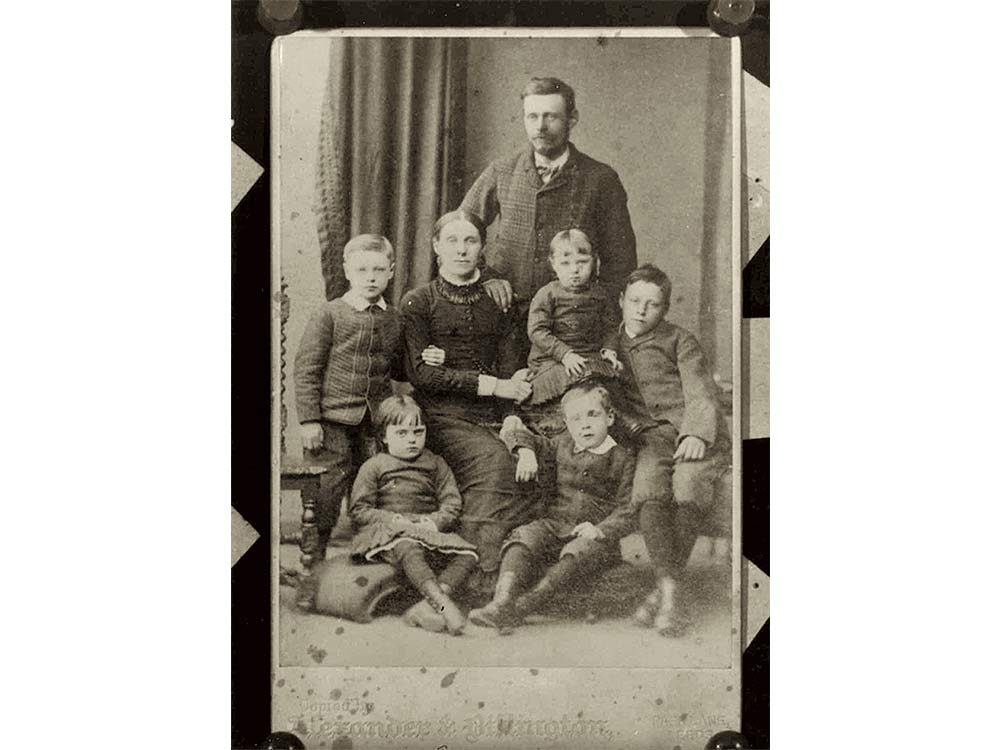
A Journey to Remember: Excerpts From My Great-Great Grandfather’s Diary
In 1882, my great-great-grandfather James Frys Hindmarch was a stone mason in Newcastle-on-Tyne, England. He and his wife, Ann Appleton Hindmarch, and their five children, Thomas, Annie, Henry, Mary and George (above) came to Canada to homestead. The following are excerpts from James’s diary, from the family’s departure until their arrival at the site of their homestead, east of Moose Mountains, N.W.T. (now part of Saskatchewan).
May 12, 1882
We board the vessel in Liverpool. We leave behind two graves which hold two small sons, James and Fred. The distant horizon looms prospective in our new-to-be homeland, Canada.
May 14
Rain and snow are falling, and the deck is covered in ice.
May 15
We meet another family headed to Ft. Garry. His wife expects to deliver about August, the same time as Ann.
May 16
There is a vessel in distress nearby. We take on 90 immigrant passengers to lighten their load, and will have slower progress to allow the “crippled” vessel to follow.
May 18
We sighted the first iceberg. Huge structure that glistens in the sun! The children are elated at the volume of it.
May 22
Our friend’s twin boys are delivered. Not much hope for them at 6 1⁄2 months. We pray for them.
May 23
They passed. How sad to see two small bodies, wrapped in white, slide into the engulfing waters of the Atlantic. One wonders how many graves its water have held.
May 24
A huge birthday cake, honouring Queen Victoria’s birthday, is served to all the passengers.
May 27
Land ahead! Many icebergs, we make our way slowly.
May 30
Quebec!
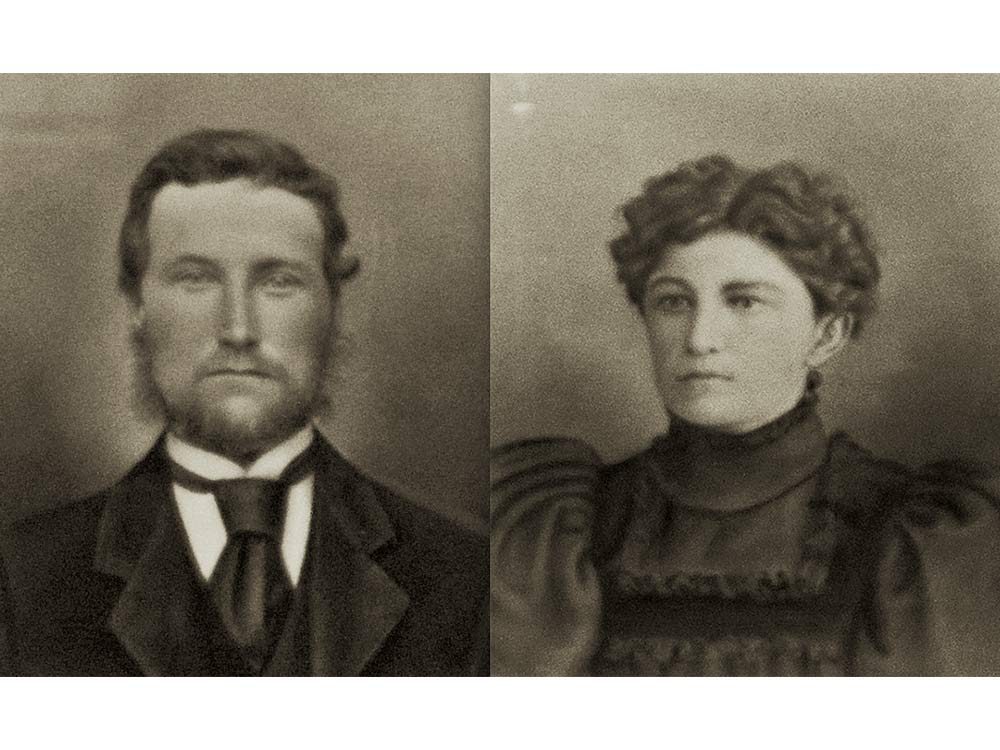
The Hard Reality of Life in the 1800s
May 31
Boarded an immigrant train. They appear to be assembled to shake all the “old country” notions out of the immigrant, just to prepare him for his new life!
June 2
After some passengers disembarked, we got orders to move into the forepart of the train. We had children and all our things to carry through, while going at full speed, having to contend with many legs of men and women sleeping on the floors. They were calling one another names in tongues unknown, yet one knew by their manner.
June 3
Arrived in Toronto, where the train embarked on a huge ferry. Arrived in Chicago on June 4 then Minneapolis on June 5. Had to pay the usual Sunday traveller’s penalty.
June 6
Arrived in Ft Garry. This city of the west has some first class brick buildings, but for every permanent place there are two temporary ones. A great many simply living under canvas. All is a bustle. A room is $1.50 per day.
June 7
Went to see the government agent, who was not there. The person representing him knew nothing, and did not even have the sense to recommend me to the Dominion Land Office, where information might be had. For assistance on changing money, he actually had the cheek to offer me less for my pound. They try to make money off of the immigrants. I cashed my draft at the bank for more. My friend is a carpenter and can make $2.50 here, but that won’t keep the family in a boarding house. His boxes of belongings are all broken, some destroyed. They were all new and well-made. (The family) is very much disappointed more than can be imagined by anyone who has not been an immigrant. One of our boxes is broken, and one is amiss. We will go on to Oak Lake where I am told I might get a homestead 60 or 70 miles out.
June 8
Took the train to Oak Lake where accommodation in a tent was $1 for beds and 30 cents for very poor meals! Bought a tent for $10.
June 9
Went to the Land Office full of hope, but found it crowded, homesteads taken up as fast as the papers could be written out. Many were disappointed going out 60 or 70 miles, finding some suitable places, which were all taken up in the time they were away. I determined to take a homestead off the map, without seeing it, and if it did not suit, would buy a railway lot in the vicinity. The gentleman in charge asked why I was taking it without seeing it? He said if you do this and not take it, you will lose your money, and not be allowed to take up another homestead. But if you take your family till you come to land marked “not in the market” you can settle on a vacant even-numbered section, then write me. Build a house and get to work at once, and when it is on the market come and fill out the papers. I found out all the CPR land worth buying is bought up on speculation. It is surprising that members of Ontario farmers, who are disgusted with what they have seen, are going back to Ontario without taking up land. They were sold land in Qu’Appelle, which flooded, and when they came back to the Land Office, there were different agents there.
June 13
I had a talk with a homestead speculator. He sold a homestead in Qu’Appelle for $350, which I knew he only took up on Thursday. Another man had one for sale but I would not trade. He said he would take up another homestead. I told him what the land agent said, his reply was stuffy. I can’t do it, and they can do it. I am not discouraged, just disgusted at the way in which the speculators work—and get away with it.
June 15
I hear of an Englishman who plans to leave for Moose Mountains Monday, 21st.
June 18
I bought an outfit—yoke of oxen, wagon, harness, a milk cow, and three months provisions.
June 23
The water is very high, and we must wait until it subsides.
June 26
Surveyors crossed the creek, and helped us cross—took the whole day. Weather has turned hot and humid and the mosquitoes are terrible. The wagons are becoming stuck often.
Find out what one modern-day immigrant wishes he’d known before moving to Canada.
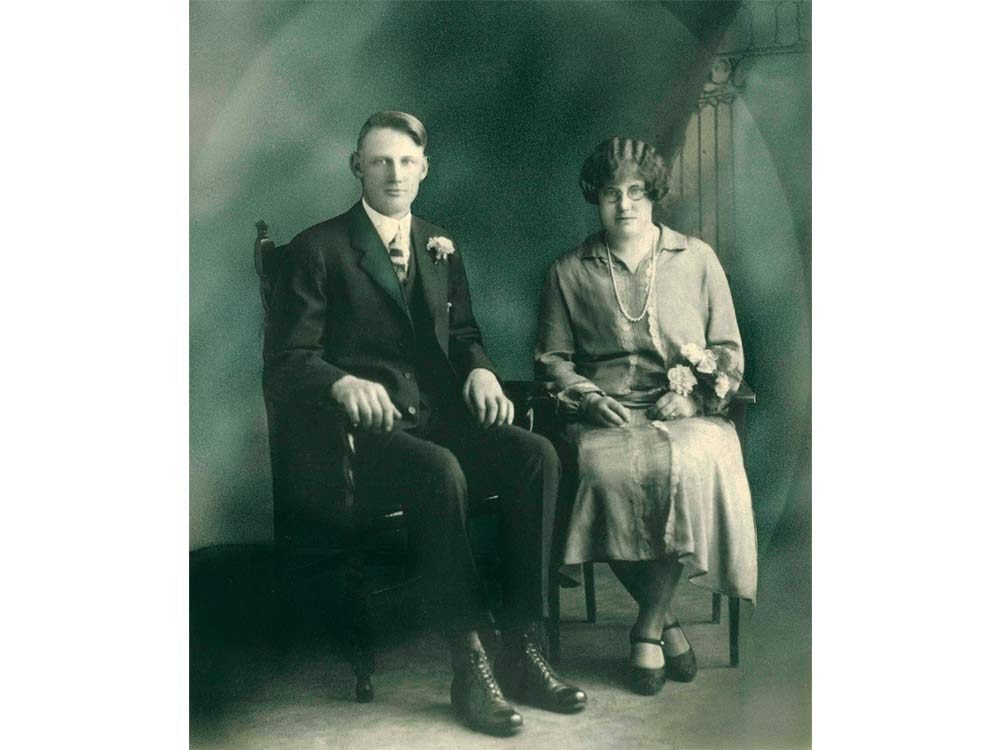
The Final Diary Entries
July 1
The water is high. We lost much of our provisions in crossing a creek, but I thank God we are all safe.
July 20
In the distance, we saw the Moose Mountains. My wife and children show much joy, soon we will be home! We met a man who told us land is open here for homesteading, and I fancy the land he told me about.
July 26
We arrived at our home. We put up our tents and are truly “homesteaders.” I can get logs from the mountains to build a house. There are often Indians around, and we will welcome them. I hope that this account of our journey, and yes, hardships will be passed on and kept by my future families.
Here ends the diary, as there was too much work to do. Logs had to be hauled, a house to be built, gathering firewood for the winter, breaking land, and cutting and stacking hay for the livestock.
James and Ann’s daughter Lily was born August 23, 1882, while the family was still living in a tent. Four more daughters, Sara, Isabella, Helen and Dorothy, as well as two more sons, James and Frank, were born over the next few years.
The town of Cannington Manor grew rapidly over the next few years to include a steam-powered flour mill, a land titles office, school, a pork packing plant, two cheese factories and a saw mill. There were social and cultural activities, in which the Hindmarches were seldom mentioned. They were too far away, and too busy trying to make a living in the midst of drought, frost, hall, severe winters and Prairie fires. Their first house was destroyed by fire, and their second by a gale.
In 1891, their 11-year-old daughter died of consumption. Some of the children attended school when they could, but the weather was too harsh to attend during the winter.
James raised purebred Holstein cattle, which he showed at the fairs. He was a shareholder in the Moose Mountain Cheese Factory. A picture of Cannington Fair shows James with one of his prize Holsteins and his dog at his feet. It has been entered in the Dairymen’s history book, and has been placed in the Dairymen’s Museum in North Battleford.
In his capacity as stone mason, James is said to have built the impressive stone racing stable at the Beckton Ranch. The beautiful mansion had 26 rooms, complete with bachelor’s wing.
In 1898, at the age of 48, James died after being gored by a Holstein bull. Ann was left with several young children to raise and a farm to manage, with the help of her older sons. Ann died in 1931 at the age of 78.
When the long-awaited railway went through ten miles south, the village gradually died out. Many moved away, went to war or headed north to the gold rush. Still others, the Hindmarches among them, persevered and today still have descendants farming or otherwise making a living in the Cannington district. They, as well as others who are spread across Western Canada, are proud to claim that their ancestors were among the first pioneers in Cannington, N.W.T.
Next, check out 10 historical landmarks every Canadian needs to visit.
